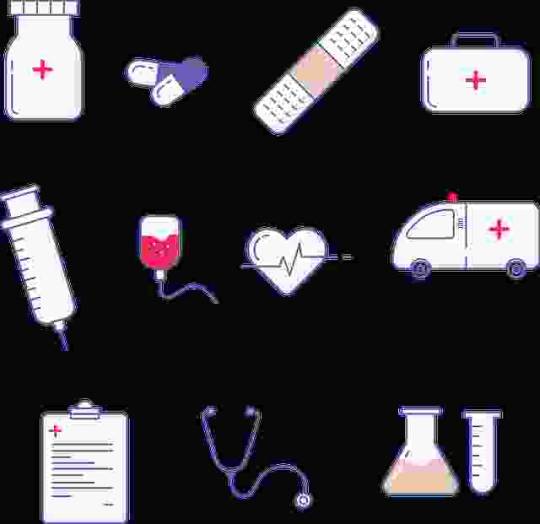#blood transfusions
Text

hee haw!!! art :)
sorry for the piss poor photo quality (not that anyones gonna see this post anyway)
transfusion more like trans 🏳️⚧️ . fusion
#bobbi's bad art#blood#blood bag#yami kawaii#病みかわいい#やみかわいい#sick cute#traditional art#markers#medical#blood transfusions#oh my iron is normal now so i can donate blood 🩸 💪#ALSO last time i got bloodwork done#i didnt realize how much blood they were taking#i was expecting maybe 2-4 tubes#i sat there. for a solid 5 minutes#they took like 12 vials of blood#💀💀💀#anyway.#i’m really excited to donate blood!!!
37 notes
·
View notes
Text
JK Rowling is one step away from just outright saying black people shouldn’t give blood to white people.

As a blood donor, I’m here to say that yet again she is talking out of her ass and doesn’t have a clue what she’s talking about. There is apparently a possibility of a risk to men if they receive blood from a woman who has been pregnant, but that’s it.
It’s actually mildly hilarious because she’s literally talking like one of the pure blood Death Eaters from her books: “filthy half-breed! Mudblood!”
45 notes
·
View notes
Text
On This Day In History
June 15th, 1667: The human first blood transfusion is administered by Dr. Denys.
#history#medical history#french history#17th century#science#scientific history#blood#blood transfusions
46 notes
·
View notes
Text
Child Sacrifice and Jehovah’s Witnesses
Publisher: In-Sight Publishing
Publisher Founding: March 1, 2014
Web Domain: http://www.in-sightpublishing.com
Location: Fort Langley, Township of Langley, British Columbia, Canada
Journal: In-Sight: Independent Interview-Based Journal
Journal Founding: August 2, 2012
Frequency: Three (3) Times Per Year
Review Status: Non-Peer-Reviewed
Access: Electronic/Digital & Open Access
Fees: None…

View On WordPress
#Advocates for Jehovah&039;s Witnesses Reform on Blood#Bible#blood#blood transfusions#child sacrifice#doctors#God#Governing Body#Kingdom Ministry#Lee Elder#Scientists#Watchtower Society
2 notes
·
View notes
Text
Love and Blood Transfusions II

Poor Arthur! He really feels this special bond between him and his deceased fiancée because they shared some bodily fluids. He just doesn’t realize.
To continue my first post on Love and Blood Transfusions...
Stoker set this up from the beginning. It was almost sweet, if a little scandalous, when the young and vivacious Lucy lamented that she could only marry one of her three suitors. By the end of her life, all three men, plus a crazy old man, would inject their blood into her veins. It didn’t mean much to Lucy - it wasn’t enough to save her. But it seemed to mean a lot to the men.

I am a big fan of the 1992 Coppola film. I think Coppola captured the sexual tension of the novel perfectly. Coppola’s blood transfusion scene makes visually obvious Stoker’s subtext. Lucy writhes in orgasmic pain. When Arthur bursts in on Seward and Van Helsing preparing the blood transfusion, notice how Seward quickly moves Lucy’s leg out of his lap so that Arthur doesn’t see. Seward loves Lucy, but also knows that it isn’t his place to love her like this. Because for both Seward and Arthur, blood donation is an act of love. And intimacy.

It’s Van Helsing who just says it out loud:

So, blood transfusion is an opportunity for a man to demonstrate his love for a woman. But if she needs more than one man’s blood to survive, well then, it’s also an opportunity to slut-shame her. Might I just remind everyone that the faithful husband Van Helsing also told Seward how the “...smuts of London weren’t quite as bad as they were when he was a student.”
In the modern age, when people regularly donate to strangers through blood banks, this mystic, sexual, romantic link that was a Victorian blood transfusion is just not a thing anymore. When a pregnancy-related blood transfusion is needed, they don’t stop and ask the baby’s father if he would like to donate the blood so that he can have this special bond with his partner. They might ask him to donate blood, to support the blood bank, but not so that they can enable this romantic metaphor.
It’s a beautiful idea, that the person you love could save you with their blood. But as we see in Dracula, the beautiful idea could be used against a dying woman. And sometimes it’s not even enough to prevent your loved one from turning into a vampire.
#dracula daily#september 22#lucy westerna#bram stoker#dracula 1992#francis ford coppola#blood transfusions#gothic literature#medical horror
15 notes
·
View notes
Note
It's worth it if he's alive. Isn't it?
Worth it for now, yeah. Don't know how long it'll last. It almost just went to shit. It's been almost going to shit for the past week. It wasn't this bad back then. It was just a pattern to follow back then. There's no pattern here, shit just keeps on going. Can't give up now, though. It'd be unfair to everyone, both the alive and dead
#gnat has a strange form#shouldn't be surprised#they're just resting#they really did try to pull that didn't they#it's what bee did#what she did.#never liked that method#too cruel#gnat just did it to have someone in debt#he's alive though#so I can't complain#it's almost done#feel slightly dizzy#blood transfusions#ugh#I'll manage though#I'll bring him back#I'll bring gnat too#just in case#I can't just leave them
4 notes
·
View notes
Text
Tyler: Lance, you gotta stop with this vampire shit.
Lance: *waving hand in Tyler's face *
Lance: Miss me with that gay shit.
Tyler: What gay shit? THE LAW 🤌🤌
#incorrect cycling quotes#cycling stuff#cycling#lance armstrong#tyler hamilton#the vampire shit#refers to the doping US postal was doing#blood transfusions#refered to as vampire stuff
2 notes
·
View notes
Text
What are y’all crying over today because I personally once again remembered that if I’d been born 100 years earlier I almost certainly would have died in my late teens because safe blood transfusions didn’t really become a thing until WWI and the whole fragility of life and the human experience hit me again
#Nina stories#TW death#blood transfusions#science I guess#medicine#modern medicine#idk y’all I probably need to deal with this whole trauma at some point#instead of going eh I survived it’s okay!!!#yes Dracula daily did make me think of this ok
5 notes
·
View notes
Text
#champions of stem#engineering education#stem education#bloodbanking#blood transfusions#medical researcher#surgeon#african american scientist#science teacher
2 notes
·
View notes
Text
Personal Note: Busy Week
You may have noticed that I’ve beens somewhat irregular this week. That’s because we took my husband to the hospital on Sunday, thinking his heart may be acting up again. It wasn’t his heart. His hemoglobin count was extremely–dangerously–low, and he was admitted. He was given two bags of blood over the next couple of days, along with two infusions of iron. He is very weak, frail-looking, and…
View On WordPress
#anemia#blood transfusions#busy week#changes that need to be made#God is always good!#he&039;s very tired and weak#hospital for several days#husband is ill#iron infusions#personal notes#thankful for family and friends
0 notes
Text

Blood classification, scientifically termed as blood typing, involves categorizing an individual's blood into one of the four main groups: A, B, AB, or O. These fundamental blood groups can be further specified by the presence or absence of the Rh antigen, creating eight potential blood types. The importance of blood classification is extensive, particularly in the context of ascertaining the compatibility between donor and recipient blood in various medical scenarios.
1. Blood Transfusions: In critical situations like accidents, surgical procedures, or severe medical conditions, when a patient has experienced a substantial blood loss, obtaining compatible blood becomes an imperative, life-saving requirement. Incompatible blood transfusions can result in a severe and potentially life-threatening reaction known as hemolysis, in which the recipient's immune system attacks the transfused blood cells.
2. Organ Transplants: Organ transplantation is a intricate medical procedure where success hinges not only on the organ match but also on the compatibility of the donor and recipient's blood types. Mismatched blood types can lead to the rejection of the transplanted organ, endangering the patient's life.
3. Pregnancy and Rh Incompatibility: During pregnancy, especially when the mother and the developing fetus possess different blood types, blood classification assumes a pivotal role. If the mother is Rh-negative and the baby is Rh-positive, there exists a risk of Rh incompatibility, which may lead to hemolytic disease in the newborn. Blood grouping is instrumental in monitoring and managing this condition to ensure a healthy pregnancy.
4. Identification of Rare Blood Types: Certain individuals have uncommon blood types that necessitate special attention and care in medical situations. Recognizing and documenting these exceptional blood types is essential for promptly sourcing compatible blood in cases of medical emergencies.
Comprehensive full body checkups at Saifee Hospital Mumbai, which is considered to be one of the best hospitals in the country, not only help in determining your blood type, but also help assess your overall health condition.
#blood typing#blood group#blood transfusions#Rh antigen#Rh incompatibility#blood types#full body checkup
0 notes
Link

#Link Post#Infographic#Medical Procedures#Blood Transfusions#Injuries#Warning: Death Mention#Guns#Gunshot Injuries#Hospital Operations
0 notes
Text
Watchtower’s Approved Blood Transfusions
Publisher: In-Sight Publishing
Publisher Founding: March 1, 2014
Web Domain: http://www.in-sightpublishing.com
Location: Fort Langley, Township of Langley, British Columbia, Canada
Journal: In-Sight: Independent Interview-Based Journal
Journal Founding: August 2, 2012
Frequency: Three (3) Times Per Year
Review Status: Non-Peer-Reviewed
Access: Electronic/Digital & Open Access
Fees: None…
View On WordPress
#Advocates for Jehovah&039;s Witnesses Reform on Blood#blood transfusions#Jehovah&039;s Witnesses#Lee Elder#plasma#platelets#red cells#vaccines#Watchtower Society#whole blood
0 notes
Text
The transfusion part of Daily Dracula was the one that I was both anticipating and dreading in equal measure. In part, this is because I read Dracula on two occasions, once while I was in high school and again when I was in college, and I remember my absolute WTF reaction to the idea that Van Helsing is just... going to transfuse blood to Lucy from the nearest available healthy man, without any testing.
That was some years ago, back when I had only a layperson’s understanding of modern transfusion medicine. Today I’ve had a full year’s worth of education in just blood banking (immunohematology), a month long portion of an internship in a blood bank, have gotten ASCP Board Certified to work in a blood bank, and have worked for nearly a year at a Level 1 Trauma Center, capable of taking Level 2 Traumas in pediatrics, with a Neonatal Intensive Care Unit. The facility I work at does every kind of blood banking you could possibly imagine, and quite a few I can confidently say you probably can’t.
With that amount of knowledge, this entry of Dracula Daily goes from being oh god did they get lucky that Lucy happened to be compatible with everyone that gave her blood to it’s almost mathematically impossible that she didn’t die of a transfusion reaction.
As others have rightly pointed out ( @mylordshesacactus ) , at the time Dracula was written, transfusion medicine was in its infancy. We didn’t know about blood types, or how to successfully crossmatch blood. The ABO blood group system wouldn’t be discovered by Landsteiner until 1901, some four years after the publication of Dracula. Landsteiner (and Weiner) would go on to also find the Rh blood type group, but not until 1937.
So, I’m sure you’re thinking, well isn’t it lucky that Lucy must have been AB Pos, the universal recipient, or maybe the odds lined up nicely and everyone involved in the transfusions happened to be an O type (48% of the modern UK population) or maybe an A type (38% of the modern UK population)... but I’m here to tell you, you’re thinking about blood transfusions as they are today. And early blood transfusions would not have been like that at all.
The type of transfusion that Van Helsing would have done was a whole blood transfusion by taking blood directly from a vein in Arthur, passing it through the IV tubing of the day, directly into Lucy.
MODERN TRANSFUSION MEDICINE (almost) NEVER USES WHOLE BLOOD.*
My facility does not keep whole blood in stock.
This is partially because it is inconvenient to use, and partially because it not especially safe to use.
Modern transfusion medicine instead utilizes blood components, which we get from either apheresis collection of that component (platelets), or spinning down and carefully removing that component from the red cells (plasma, which is often called FFP or fresh frozen plasma, because we tend to store it at -80 deg C and thaw it as it is required).
Blood transfusions - today - are typically of packed red cells, which contain only the most minimal amount of donor plasma. Because we are only transfusing RBCs, we can concern ourselves with the traditional ABO compatibility chart, because we only need to worry about the antigens found on the donor cells, and if the patient has antibodies to those antigens.
ABO compatibility is - of course - as follows:
O type blood may be given to AB, A, B, or O type patients. (O type patients may only receive O type blood.) This is the universal donor, when referring to RBCs.
B type blood may be given to AB or B type patients. (B type patients may receive B type or O type blood).
A type blood may be given to AB or A type patients. (A type patients may receive A type or O type blood).
AB type blood may be given to AB patients. (AB type patients may receive AB, A, B, or O type blood). This is the universal recipient, when referring to RBCs.
However, with whole blood, you must also take into account the donor plasma. The plasma, after all, contains ABO antibodies (and potentially any other antibodies a patient may have, including antibodies to D, or Kell, or Duffy, or Kidd, or any other antigen in the 43 human blood group systems currently known to the ISBT). If the donor plasma is incompatible with the patient’s blood type, the donor antibodies will attack the patient’s own red blood cells and potentially cause an acute hemolytic transfusion reaction, essentially shredding the attacked red blood cells. In the process this can also cause DIC, or severe kidney damage. This is the type of reaction that blood bankers fear above all others, as it can be lethal, and often was in the past.
Plasma compatibility is the inverse of RBC compatibility, it is, as follows:
O type plasma contains A and B antibodies. It may be given to O type patients. [O type patients may receive O, A, B, or AB plasma.] O is the universal recipient for plasma.
B type plasma contains A antibodies. It may be given to O or B type patients. [B type patients may receive B or AB plasma.]
A type plasma contains B antibodies. It may be given to O or A type patients. [A type patients may receive A or AB plasma.]
AB type plasma contains no antibodies. It may be given to O, A, B, or AB patients. [AB type patients may receive AB plasma.] AB is the universal donor for plasma.
WHAT DOES THIS MEAN FOR WHOLE BLOOD TRANSFUSION?
It means that to be sure of compatibility, when transfusing whole blood, the match must be EXACT.

And heavens above, I haven’t even touched on what can go wrong with not having leukoreduced blood (that is transfusion including fully active WBCs), which includes the extremely dangerous TRALI** or Transfusion-associated graft vs host disease***.
I’ve also ignored Rh compatibility - which is fine... for the first exposure to transfused blood, since D antibodies do not occur unless the patient is D negative and has been exposed to D positive blood in the past. (Had a sensitization event.) But is generally an important aspect of transfusion medicine where women of child-bearing age are concerned since anti-D can cause hemolytic disease of the fetus and newborn.****
And all of this doesn’t touch on some of the weird exceptions, what happens when you have an unexpected antibody on the screen, ABO discrepancies, the Bombay phenotype, etc.
*https://www.aabb.org/regulatory-and-advocacy/regulatory-affairs/regulatory-for-blood/whole-blood-and-red-blood-cell-components
**https://en.wikipedia.org/wiki/Transfusion-related_acute_lung_injury
***https://en.wikipedia.org/wiki/Transfusion-associated_graft-versus-host_disease
****https://en.wikipedia.org/wiki/Hemolytic_disease_of_the_newborn
0 notes
Note
They’re thinking of Jehovah's Witnesses
Possibly? But JWs don't just reject blood transfusions from non-Witnesses, they reject them wholesale. It's one of their most harmful doctrines (and it has no biblical basis), but it's not an issue of wanting to avoid contamination as such (although they will frequently argue that the blood doctrine helps to avoid disease).
#jehovah's witnesses#watchtower bible and tract society of pennsylvania#blood transfusions#christianity
1 note
·
View note